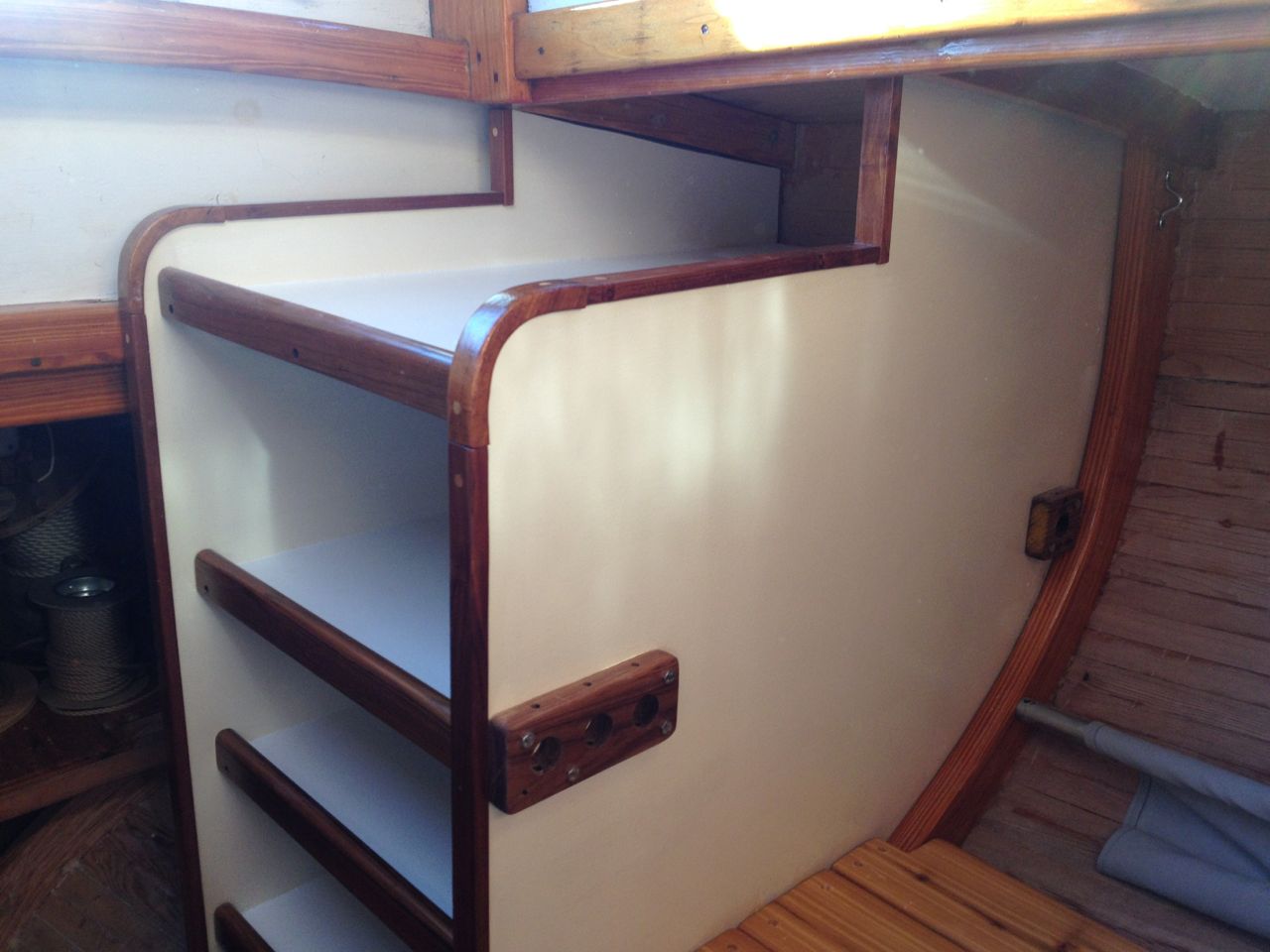For those who wondered why I was AWOL from this blog for the the whole trip, the explanation is simple: First, I was too darn tired most days to even think of cracking open my computer to blog. But mainly, I quickly realized that Helena was doing a fantastic job of capturing the day-to-day feel of the trip, and that I couldn't match her fresh eyes and enthusiasm for the adventure as it unfolded. She did a much better job of capturing the voyage than I could have done, and I was glad to let her do it. Thank you, darling!
And yet, I do have some impressions that I'd like to put down before they fade from memory. So I'll tackle them, in no particular order, as I think of them over the next few days or weeks.
Since I have one of the few wooden boats in Huntington Harbor, people often say things like this to me: "I love the look of your boat, but the work must be stupendous!"
I used to sort of agree, but now I say, "Ha!"
Fiona, of course, is a strongly-built fiberglass boat. So strongly built that her hull will probably last for a thousand years, in a landfill or at the bottom of some harbor, if no where else.
And yet, practically every day of our voyage, something needed repairing. From replacing a water pump on the engine, to making a new preventer for the main boom, to fixing a broken digital display, to coaxing an old outboard back to life... the repairs and maintenance never ended.
I didn't mind. In fact, I looked forward to the day's chores. I found them interesting and they helped pass the time during the long passages. But gradually I realized that Fiona didn't need us to sail her. With the way Eric had the sails set up (more on that another time) and the two self-steering systems on board, Fiona could have sailed herself to Antarctica. Sailed straight through storms and high seas until she ran aground on the Antarctic Peninsular.
No, our job was not to sail her, but to keep her going.
If Fiona was so strongly built, then why did she need so much maintenance and repair? In a word: systems. Like many modern boats, Fiona is a complex of systems: engine, fuel, electronics, electrics, sails, rigging, etc., etc.
In many ways, she reminded me of early computers, which had so many moving and/or delicate parts that they could not run for more than a few days without some tube or relay or connector failing.
I'd heard the stories, of course, of cruising couples setting off for the South Pacific in their dream boat stuffed full of refrigerators and computers and radios and self-furling gizmos, only to wind up in some sullen harbor for months on end, while parts and experts were flown in from the States at great expense to get her going again.
Luckily, Eric had the money, skills, and spare parts on board to repair just about anything. But whilst up to my elbows in grease in Fiona's engine room one day, it did occur to me that taking care of the Blue Moon was easy in comparison. And a heck of a lot cleaner. A bit of rope work, a bit of painting... what else did she need?
The answer is, not much. In fact, while working on Fiona helped pass the time, was educational, and even interesting, it wasn't what I'd call fun. But fixing thing on the Blue Moon is the very definition of fun. No kidding. I looked 'fun' up in the dictionary the other day, and there it was:
Fun
noun
1. enjoyment, amusement, lighthearted pleasure.
"The sailor had fun working on his old wooden boat."
All the Blue Moon's 'systems' are built from wood and rope and bronze and leather and glue and paint. Lots of paint. She's got electronics, but they are all hand-held and can be easily replaced. In short, she's simple. It doesn't seem like it, some days, but spending several weeks on a much more complicated boat made me realize how simple she is, and how much I missed that simplicity.
Would I take her to the Antarctic? No, but not for the lack of complex system. Certainly William Atkin -- who designed the the double-ended model that the Westsails were based on -- built many a sturdy wooden boat that was capable of sailing to the polar regions. In fact, many have been there and back. Just old-fashioned boats, built of wood, and rope, and bronze, and bits of leather, and paint... lots of paint.
"Romantic fool!" I can hear you calling.
Yes, probably. But the next time someone criticizes wooden boats for being too much work, I'm going to say, Ha!
Speaking of which, I spent some time this week finishing up my galley project. The shelves were smeared with epoxy and there were a number of mistakes that needed hiding, but nothing that a bit of sand paper, elbow grease, and paint couldn't fix.
 |
| Galley, with finishing touches |
Next Episode: Taming the Tablesaw
This sailor had fun reading your posts...
ReplyDelete